
Chef Eddy's Insider Tips for the Perfect French Macarons

French Macarons - ah, such sweet little dainty confections. Beautiful, delicate, and a little bit haughty, think of French Macarons as the Grace Kelly of desserts. Don’t be fooled though; macarons are more than just a pretty face. Ever-increasing in popularity, these fragile almond flour cookies can be found everywhere from Parisian patisseries to Trader Joe’s.
The perfect French Macaron has a thin, smooth shell that gives a slight crunch when you bite into it with a nutty, chewy center. Macarons come in a rainbow of colors and flavors and are normally filled with silky ganache, buttercream, or jam.
While recipes for French Macarons are deceptively simple, macarons are notoriously temperamental. Perfect macarons require patience and precision. This is not one of those, throw everything in a bowl and whip together type recipes. But trust us, when you pull your perfectly domed macaron out of the oven, you’ll find they are worth the extra effort.
Ready to give them a try? Chef Eddy Van Damme shared his tips for the perfect French Macarons.
Before You Begin
- You’ll need your macarons to dry before placing them in the oven, so rainy or very humid days are not ideal. If it’s storming outside, you might want to wait for another day to make macarons.
- All ingredients should be at room temperature before starting.

Equipment
- Ensure that all your bowls, spatulas, whisks, and baking sheets are completely grease-free.
- Using a silicone baking mat printed with macaron guides is helpful for even the most experienced chef. If you don’t have one, take a piece of parchment paper and draw a series of 1.5-inch circles each spaced 1-inch apart. Lay another piece of parchment paper on top of the template you just created and pipe away. This way you can reuse your template again and again.
- Heavy-gauge aluminum or steel baking sheets are the best choice because they provide even heat distribution. A thin baking sheet will cause the bottoms of your macarons to overcook before the tops are done.
- In the case of macarons, using a plastic food storage bag with the tip cut off won’t produce the same results as using a pastry piping bag with a tip. A pastry piping bag with a 1A or a 2A tips gives you much more control over the amount of batter coming out of the bag, and you’ll want your macarons to be consistently sized so you can sandwich them together.
- Every ingredient must be weighed precisely. Measuring with a digital kitchen scale is far more accurate than just using measuring cups.
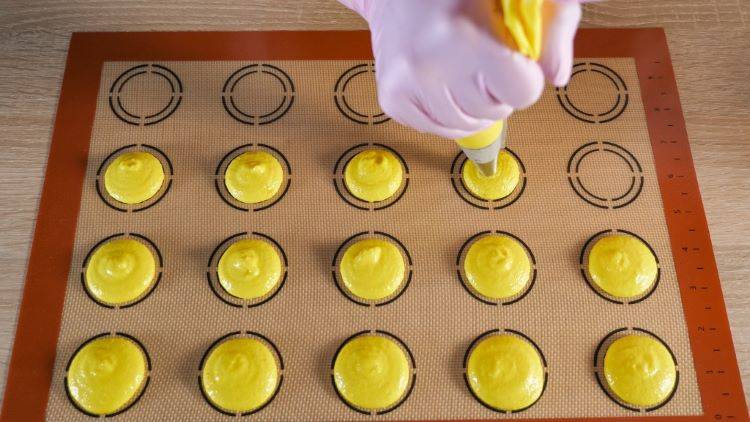
Ingredients
- Follow the recipe instructions EXACTLY. This is not a recipe that you can go off-script.
- Many brands of almond flour are too coarse for creating perfect macaron. To solve this problem, place the almond flour in a food processor and ground to a fine powder before starting.
- Use gel food color versus a liquid food color. Gel food coloring produces a more vibrant hue with less product. Liquid food color would require double the amount of liquid to reach the same shades as gel does, and then you would end up with too much liquid in the recipe. Macaroon dough with too much liquid produces cracked macaron shells.
- Do not use pasteurized egg whites or liquid egg whites, as they can prevent your meringue from reaching stiff peaks.
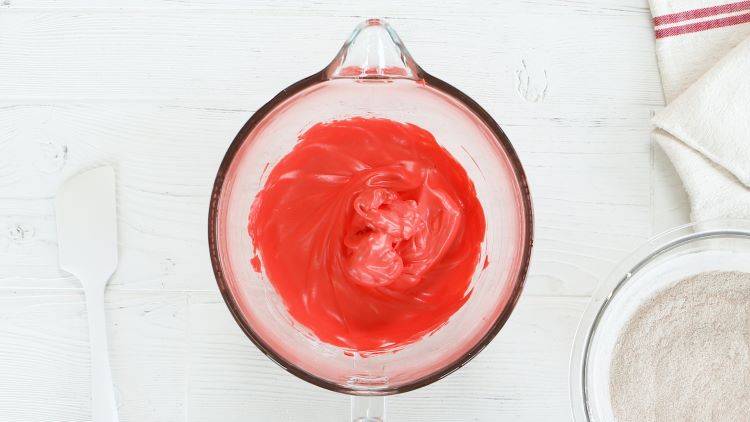
Mixing
- Carefully separate the egg yolks and egg whites so that no yolk accidentally ends up in the egg whites. Egg yolk will prevent the egg whites from whipping correctly.
- Whip egg whites to stiff peaks. Once they are stiff, stop whipping. To test for stiff peaks, pull the beaters out of the bowl. If the peaks on the beaters and in the bowl remain upright, you’re good to go. Overwhipping egg whites will make the meringue dry leaving you with cracked and hollow macaron shells.
- Macaron batter should be mixed until it becomes like thick pancake batter, but not runny. The batter shouldn't plop, it should flow. When the batter begins to look glossy around the edges and sinks back into place within 20 seconds, you have reached the right consistency.
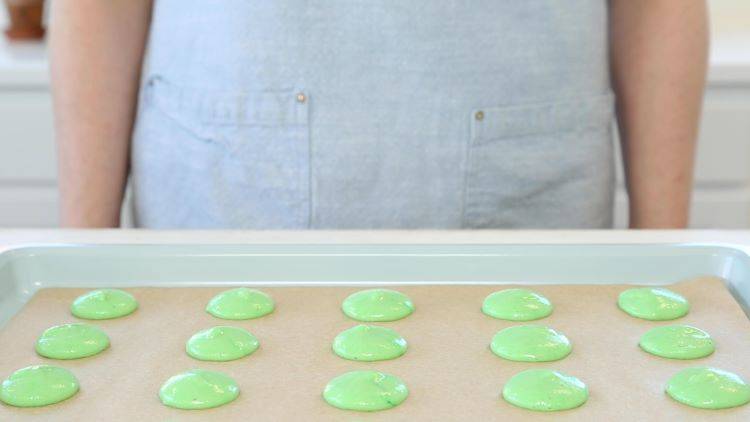
Baking
- After you’ve piped your macarons onto the baking sheet, tap the sheet on the counter to remove air bubbles from the tops. If you still have a little tip at the top, wet your finger and gently pat the tip down.
- Let the macarons sit at room temperature for anywhere from 15 - 45 minutes before placing them into the oven. The drying out process allows a skin to form on the top of the macarons which prevents the expanding air from escaping and causing cracks. You should be able to touch the top of the macron without it sticking to your finger.
- Not all ovens are accurate. Remember the note above about how precision is important in macaron making? This is another instance in which your temperature needs to be exact. Not sure? Place a thermometer in your oven and preheat to the desired temperate, then check your oven read out versus the thermometer. As an added bonus, once you know if your oven runs hotter or cooler, it will make baking all kinds of recipes much easier.
- The oven temperature needs to remain consistent, so open and close your oven door very quickly when placing the macaron cookie sheets inside.
- Place your macaron trays in the center of the oven. If your oven will only fit one baking sheet in the center of the oven, you’ll have to bake one tray at a time.
- Don’t use the convection setting.
- A fully baked macaron forms “feet” which is the bubbly looking rim along the bottom of the macaron. They should be firm, not jiggly, when touched. If it sticks or tears when you try to lift it off the baking sheet, it’s not fully baked yet. Do not let the edges brown.
- Let the macarons cool on the baking sheet. They will lift off the baking sheet without sticking when they are fully dry.
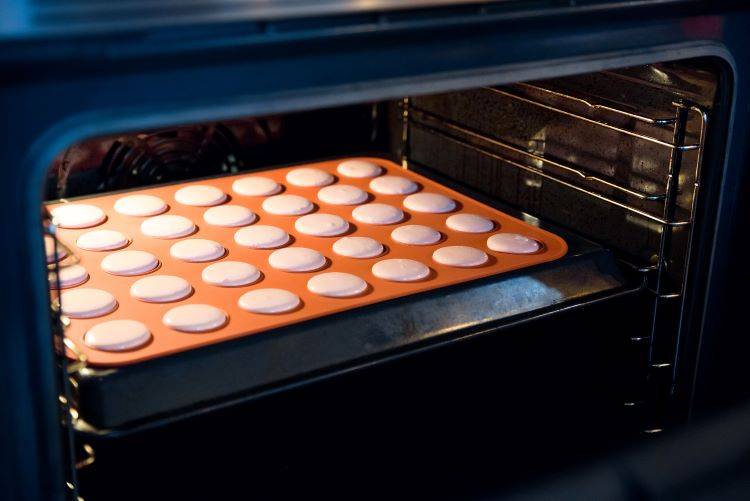
Finishing
- Macarons are best when filled the day before consuming. Stored in the refrigerator they will become nice and soft on the inside but chewy crisp on the outside.
- Many professional pastry chefs accept that not 100% of their macarons will be perfect. When sandwiching, place imperfect macaron shells on the bottom and the best ones on the top.
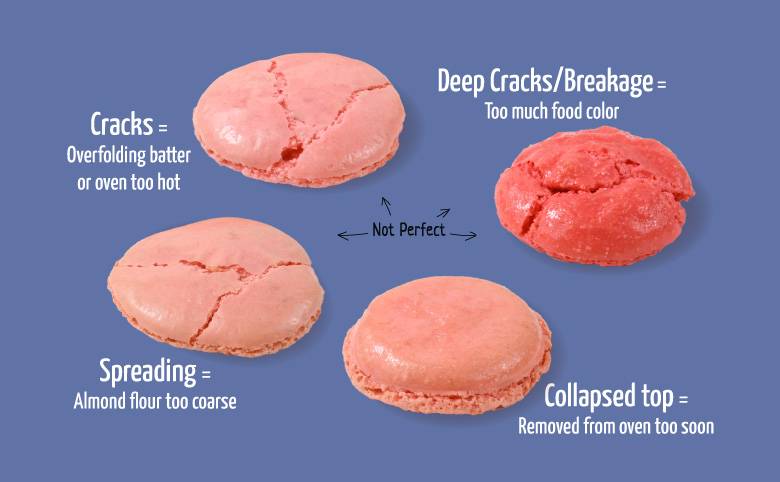
Feeling up to the challenge? Try one of these French Macaron recipes:
:  Lemon Curd Macarons - Tender meringue-based cookies filled with sweet and tart lemon curd
Lemon Curd Macarons - Tender meringue-based cookies filled with sweet and tart lemon curd 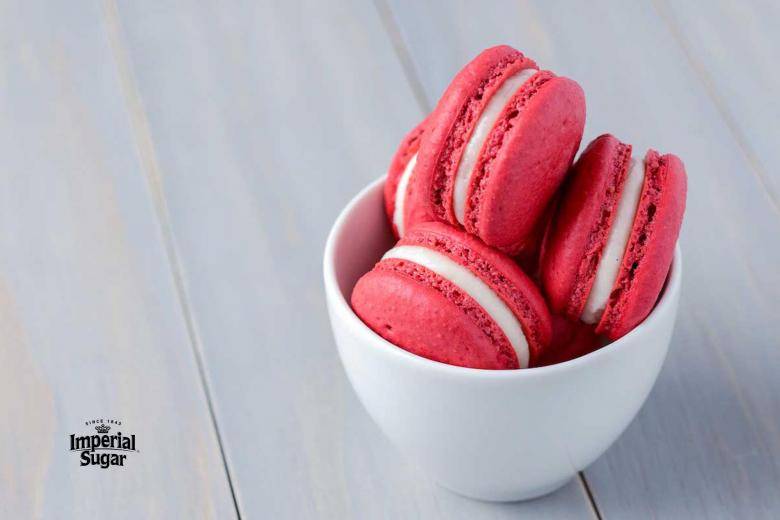 Red Velvet Macarons – Vibrant red macarons filled with vanilla cream cheese
Red Velvet Macarons – Vibrant red macarons filled with vanilla cream cheese 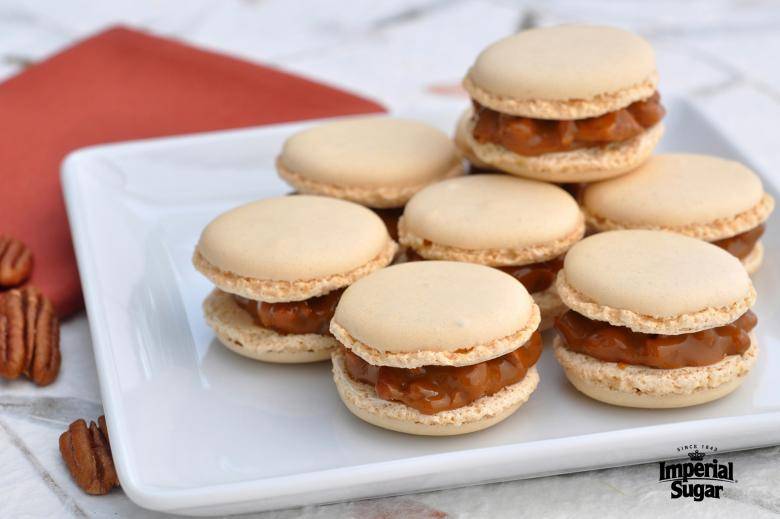 Pecan Pie Macarons - Here's an interesting twist. Delicate little macarons filled with pecan pie centers.
Pecan Pie Macarons - Here's an interesting twist. Delicate little macarons filled with pecan pie centers. 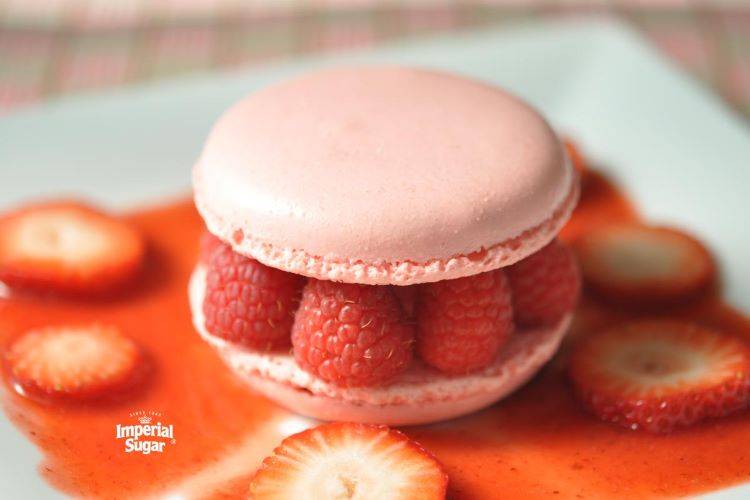 Raspberry Macarons with Strawberry Sauce – Filled with fresh berries and topped with a fresh strawberry puree
Raspberry Macarons with Strawberry Sauce – Filled with fresh berries and topped with a fresh strawberry puree 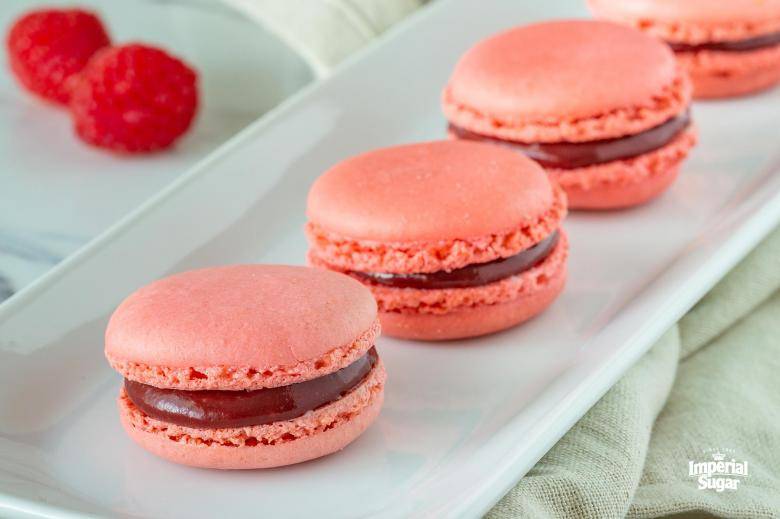 Raspberry Chocolate Ganache Macarons – Délicieux! (That’s French for you must try these immediately!)
Raspberry Chocolate Ganache Macarons – Délicieux! (That’s French for you must try these immediately!)
French Macarons add an air of sophistication to baby and bridal showers, tea parties, and birthday celebrations. Give one of our recipes a try, and let us know what you think. Bon appétit!
PIN IT NOW
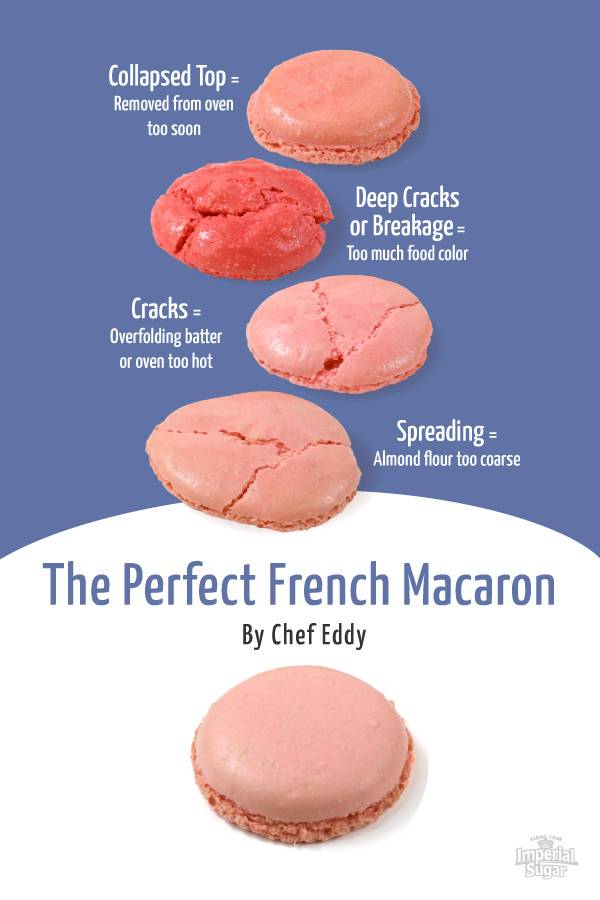
 then
then  Add IMPERIAL SUGAR to Home Screen
Add IMPERIAL SUGAR to Home Screen

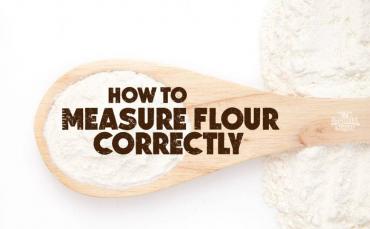

Sign in or create an account
You need an account to like and rate recipes, comment, and share a recipe with the community.
Continue with Facebook